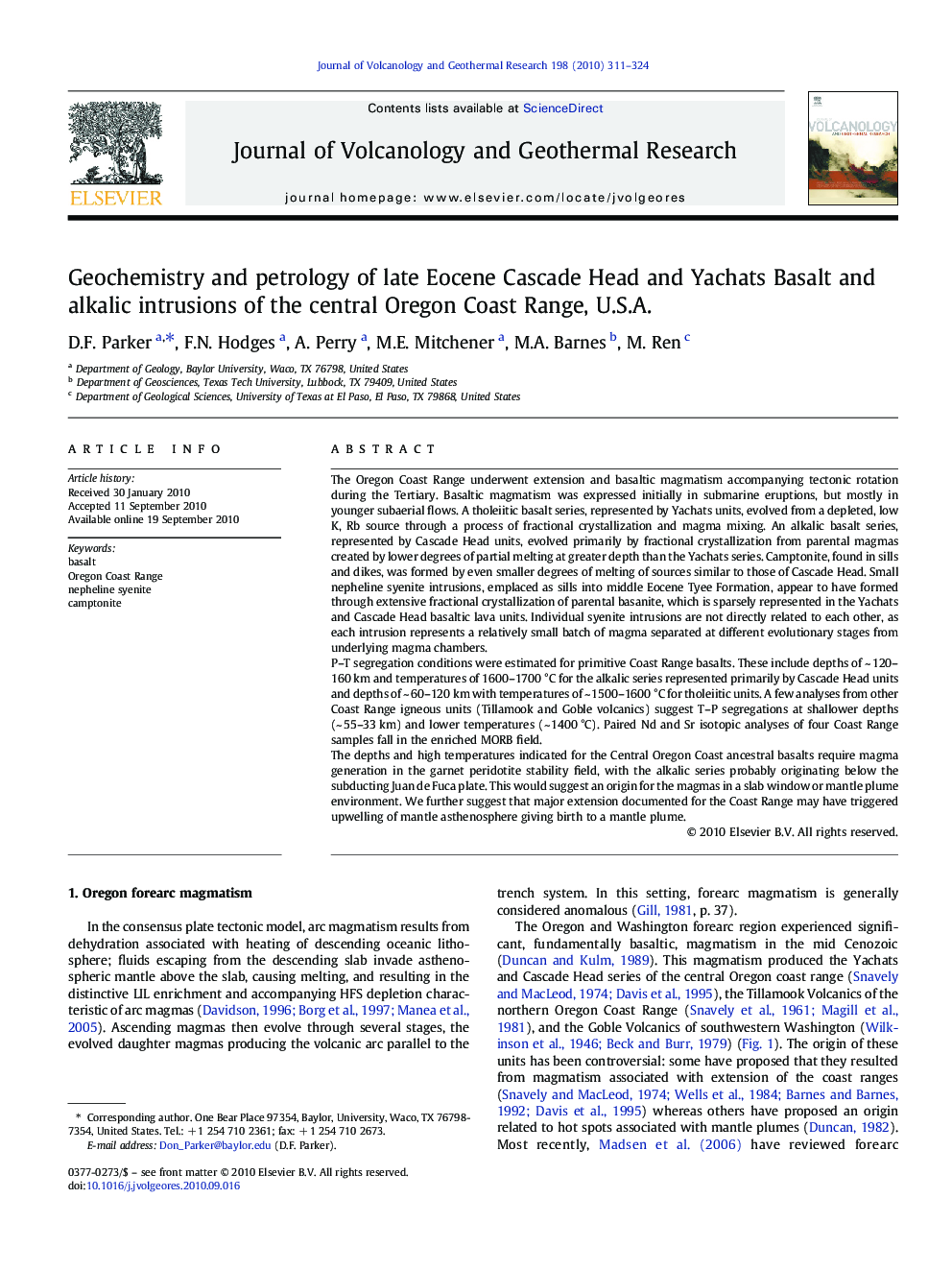| Article ID | Journal | Published Year | Pages | File Type |
|---|---|---|---|---|
| 4714168 | Journal of Volcanology and Geothermal Research | 2010 | 14 Pages |
The Oregon Coast Range underwent extension and basaltic magmatism accompanying tectonic rotation during the Tertiary. Basaltic magmatism was expressed initially in submarine eruptions, but mostly in younger subaerial flows. A tholeiitic basalt series, represented by Yachats units, evolved from a depleted, low K, Rb source through a process of fractional crystallization and magma mixing. An alkalic basalt series, represented by Cascade Head units, evolved primarily by fractional crystallization from parental magmas created by lower degrees of partial melting at greater depth than the Yachats series. Camptonite, found in sills and dikes, was formed by even smaller degrees of melting of sources similar to those of Cascade Head. Small nepheline syenite intrusions, emplaced as sills into middle Eocene Tyee Formation, appear to have formed through extensive fractional crystallization of parental basanite, which is sparsely represented in the Yachats and Cascade Head basaltic lava units. Individual syenite intrusions are not directly related to each other, as each intrusion represents a relatively small batch of magma separated at different evolutionary stages from underlying magma chambers.P–T segregation conditions were estimated for primitive Coast Range basalts. These include depths of ~ 120–160 km and temperatures of 1600–1700 °C for the alkalic series represented primarily by Cascade Head units and depths of ~ 60–120 km with temperatures of ~ 1500–1600 °C for tholeiitic units. A few analyses from other Coast Range igneous units (Tillamook and Goble volcanics) suggest T–P segregations at shallower depths (~ 55–33 km) and lower temperatures (~ 1400 °C). Paired Nd and Sr isotopic analyses of four Coast Range samples fall in the enriched MORB field.The depths and high temperatures indicated for the Central Oregon Coast ancestral basalts require magma generation in the garnet peridotite stability field, with the alkalic series probably originating below the subducting Juan de Fuca plate. This would suggest an origin for the magmas in a slab window or mantle plume environment. We further suggest that major extension documented for the Coast Range may have triggered upwelling of mantle asthenosphere giving birth to a mantle plume.
Graphical abstractCalculated depth and temperatures of segregation for primitive coast basalts. Cascade Head units appear to have been derived at great depths and high temperatures; Yachats basalt at shallower depths and lower temperatures; other coast units (Tillamook and Goble basalts) above the subducting Juan de Fuca plate.Figure optionsDownload full-size imageDownload as PowerPoint slideResearch Highlights► Cascade Head and Yachats units form differentiated magma series in the Oregon Coast Range.► Segregation depths and temperatures were calculated for primitive coast basalts assuming incremental addition of equilibrium olivine. ► Cascade Head basalts appear to have been derived below the subducting plate by partial melting of garnet peridotite; Yachats basalts at shallower depths and lower temperatures. ► Other coast basaltic units (Tillamook and Goble Volcanics) appear to have been generated above the subducting Juan de Fuca plate. ► Oregon Coast Range basalts may represent the initiation of a mantle plume related to Coast Range extension accompanying tectonic rotation.
